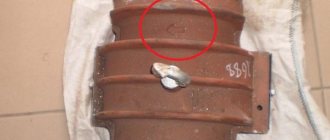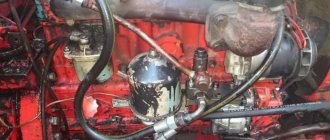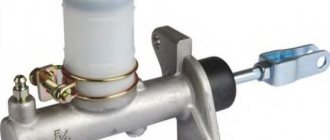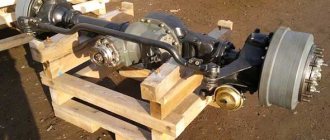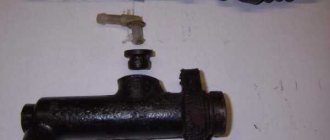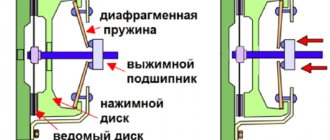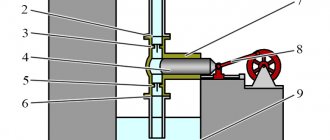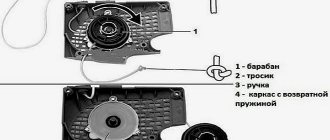- 5 minutes. for reading
What is a vacuum pump. What are the signs of a malfunction and how to fix it? What is a vacuum pump and what is it for?
Automotive vacuum pump - such devices are present in the design of almost all modern cars. Most often they are used as a brake booster. But these devices can also be used for other purposes, for example, to control turbochargers or to improve the performance of climate control.
What is a vacuum pump and what is it for?
A vacuum pump
is an electronic device that experiences electrical and mechanical stress. The pump is not intended to be serviced by the manufacturer and will not be inspected separately from the entire vacuum line during a routine inspection. When gasoline engines operate, a vacuum is created, which may be insufficient for the functioning of the vehicle's auxiliary systems. Diesel engines do not create a vacuum during operation. In both cases, vacuum pumps are used. The vacuum that is formed with their help is necessary for various systems - brakes, HVAC (heating, ventilation and air conditioning complex), etc.
The electric air pump is located behind the engine near the firewall, master cylinder and brake booster. It is easy to find thanks to two nozzles on the top, as well as the specific shape of the body. The pump maintains a constant volume of vacuum in a reservoir located behind the front bumper.
The principle of operation of a vacuum pump for bleeding the brake system
A vacuum pump for a car (like these: https://bipauto.com.ua/tormoznaja-sistema/vakuumnyj-nasos) is a special mechanism that is necessary for pumping and removing vapors and gases in order to maintain the required pressure. In the case of a diesel engine, a pump is necessary to obtain vacuum and use it to bleed the brake system.
The operating principle of this element may vary significantly. Everything will depend on the specific type of pump. If we consider the basic principles of pump operation, we can highlight the following points.
The rotor with the blade is located in the pump and divides it into two functional parts. During operation, the rotating rotor moves the existing blade. As the blade moves, one of the functional parts of the pump increases, and the second decreases. Air is drawn from the vacuum system from the suction side.
Next, the air is displaced, simultaneously passing through a certain channel. The expelled air can additionally be used to cool adjacent parts and even the engine itself. The pump's operating system also requires oil intake.
The oil serves as a seal to the pump blade and lubricates the parts. The vacuum pump for bleeding the brake system operates using the crankshaft and camshaft.
Vacuum pump malfunctions and their elimination
If the pump malfunctions or leaks, a hissing sound begins to be heard from the engine area, the heater control may not work when turned on, and a lot of force is required to press the brake pedal.
Leaks in the vacuum line can manifest themselves in the same way as pump failure.
The following indicates the need to replace the vacuum pump:
• heater control does not work; • the sound of hissing air is heard; • Great forces have to be applied to the brake pedal.
The general technical condition (including the vacuum pump) of the car can be checked using a personal diagnostic scanner. Of those on the market, we recommend paying attention to Scan Tool Pro Black Edition.
This device is compatible with most old and new cars, provided there is an ODB2 connector. The main advantage of this scanner is the diagnosis of not only the car engine, but also related systems. Connection occurs via bluetooth (for Android) and wi-fi (for IOS). All information about the condition of the car and a description of existing faults is displayed on the phone/tablet screen in Russian.
Design and operating features of a vacuum brake booster
If you ask an elderly person who has ever driven a Soviet car what it was like to brake at high speed, he will definitely answer: it was hard. I had to press the brake pedal to the floor, often even stand up, transferring all my weight to one leg. The invention and rapid introduction of brake boosters solved this problem.
What's the problem, you ask? The fact is that braking, which strongly depends on the physical condition of the driver, cannot always be effective. And a car with such an imperfect brake will certainly lose to its current brother in terms of ride comfort.
Let's look at the design of the most common brake booster and look at what malfunctions it has.
Briefly about the essence
The braking system of modern cars is mostly hydraulic. The features of her work were described in a separate article by Avto.pro. Almost no attention was paid to the so-called brake booster, which means we will look at its features here.
What to do if the vacuum pump fails
1) determine where the failed pump is located; 2) remove it; 3) install a new vacuum pump; 4) check the brakes to ensure that the vacuum system is working properly; 5) check the operation of the brakes and vacuum system while driving.
Recommendations for the vacuum pump
The service life of the vacuum pump is not limited and separate maintenance of this unit is not provided. It is inspected when it fails. If you suspect that it is faulty, contact a specialist.
How important is a vacuum pump?
If the vacuum pump malfunctions, the brakes will not function properly and driving the vehicle will become dangerous. A faulty pump must be replaced immediately.
Basic faults
The vacuum pump that is part of the car's brake system often fails. This is due to the fact that the device is subjected to fairly high loads and is sensitive to contamination. Main symptoms of a malfunction:
- Noticeable reduction in brake performance.
- The engine begins to "trouble".
- The brake pedal begins to press hard.
These problems are caused by a loss of tightness in the system. Usually occurs as a result of damage to the air pump hose that connects the intake manifold and amplifier. But there are other problems:
- Violation of the tightness of atmospheric or vacuum chambers.
- Damage to the internal mechanisms of the pump.
- Valve failures.
- Failure of the return spring.
It is important to understand that even if the pump completely stops functioning, the brake system will remain operational. But its performance will noticeably deteriorate, which can cause a serious accident as a result of loss of vehicle control.
At the first sign of a malfunction, it is necessary to diagnose the operation of the vacuum system. Even without serious skills, you can perform a superficial inspection, which will allow you to detect damage to the hose or violations of the integrity of the housing. But to find more serious faults, it is better to contact a specialized center.
Equipment catalog
Vacuum pumpsVacuum pumps (VVN, AVZ, NVR, VNK-2, VE, Vi) Vacuum pumps with oil seal (for pressure tables, vacuum forming) Oil-free (dry) vacuum pumps Equipment for refilling air conditioners, accessories for vacuum pumps (Vacuum gauges, hoses and etc.) Blowers
Fuel pumps
Pumps for diesel fuel and gasoline Pumps for diesel fuel and oil for 12V and 24V Mini gas stations for diesel fuel, gasoline and oil Pumps for oil (NK)
Drum pumps
Hand pumps for drums Pumps for drums and containers, electric, pneumatic Chemical pumps for drums Finish Thompson Chemical pumps for drums FLUX
Hand pumps
Hand pumps for wells and containers (P 0.8/30, RPN 1.3/30, RK-2)
Pumps for a summer house, a country house
Domestic pumps
Pressure testing pumps
Pumps for pressure testing (GN-60, -200M, -500, NR-60, UGI-1, Kompakt-50, Kompakt-Electro, PNU-2, -3, NP-150)
High pressure pumps (100…1000 atm)
Pumps and high-pressure washers TNA, ENA (from 120 to 1000 atm)
Pumps for oils, greases, bitumen
Bitumen pumps (DS-125, DS-134, DZ-212) Gear pumps (NMSh, Sh, BG, Calpeda: IM 25/4) Vane (rotary vane) pumps Three-screw pumps (A13V) Twin-screw pumps Pneumatic oil pumps Pressol and Ampika Manual and pneumatic lubricant dispensing units Pressol and Ampika Equipment for collecting used oil Pressol Osediagonal (screw) pumps (UDN)
Electric pumps for wells and wells
Budget pumps for water from wells Electric well pumps Pedrollo (4SR, NKm) and Grundfos (SQ, SQE, SB, SBA) Pumps for artesian wells ECV Premium well pumps ZDS Submersible well pumps Ciris (Livgidromash)
Water pumps
Automatic pumping stations Automatic pumping stations with 2 or more pumps Low-capacity pumps Vortex pumps (VKS, Pedrollo: PK, PKs PQ, Calpeda: CA, T, TP) Cantilever water pumps (K, KM, Calpeda: NM) Centrifugal console Livgidromash (K, 1K, 2K, KM) Pedrollo water pumps (CP, 2CP, NGA) Pedrollo industrial pumps (HF, F) Stainless steel pumps (MXH, NGX, AL-RED 135m, Aspri, Tecnoself) Pumps for swimming pools and hydromassage baths (Calpeda: Mpc, Spa. ESPA: Piscis, Tiper, Nadorself, Niper, Iris, Silen) Vertical multi-section pumps (TSNSG-AM, MXV, MK, Multi, TsNSv) Vertical pumps Boosta Multi-section horizontal pumps (TSNSG, Plurijet) Multistage vertical pumps GRUNDFOS (CR) Horizontal pumping units (D) Double-entry pumps with a horizontal housing split of the DeLium series Feed for boilers (AN 2/16, NG 1.6/1.6, TsVK, PQ 3000) Condensate (Ks) Centrifugal monoblock pumps SAER Pumps KORDIS Automatic pumping stations APD (on BOOSTA pumps)
Pumps for in-line heating systems
Circulation in line KML, TsNL, TsVTs-T 6.3-3.5 Pumps for circulation in heating systems (NC, NCD, NR, UPS, UPSD, Alpha)
Mortar pumps (SO)
Mortar pumps (SO-49M, VNP, UVN)
Equipment at a discount
Equipment at a discount
Water Spray Systems
Spray systems
Vacuum booster sensors
Vacuum booster with diaphragm stroke sensor
The efficient operation of the vacuum booster with the highest efficiency is ensured by the pneumatic emergency braking system. The latter includes a sensor that measures the speed of movement of the amplifier rod. It is located directly in the amplifier.
There is also a sensor in the vacuum chamber that determines the degree of vacuum. It is designed to signal a lack of vacuum in the amplifier.
Scope of application of pumps
A sewer truck is a vehicle equipped with an installation for pumping liquid from sewers, mainly based on domestic trucks. A tank is installed on the car into which waste is pumped. Inside there is a vacuum pump for a GAZ, KAMAZ, ZIL or URAL sewer truck. Special equipment is used to solve the following tasks:
- pumping waste from cesspools;
- clearing clogged sewer lines;
- pumping out liquid for access to the repair area of engineering systems;
- flushing of pipelines for various purposes.
The process of pumping waste using a sewer truck
This special equipment is capable of operating in a wide temperature range: from -20 to +40 degrees C. The machines are used by housing and communal services and private enterprises providing specialized services. More often than other models, a vacuum pump is used for the GAZ 53, GAZ 3309 and GAZ 3307 sewer trucks.
